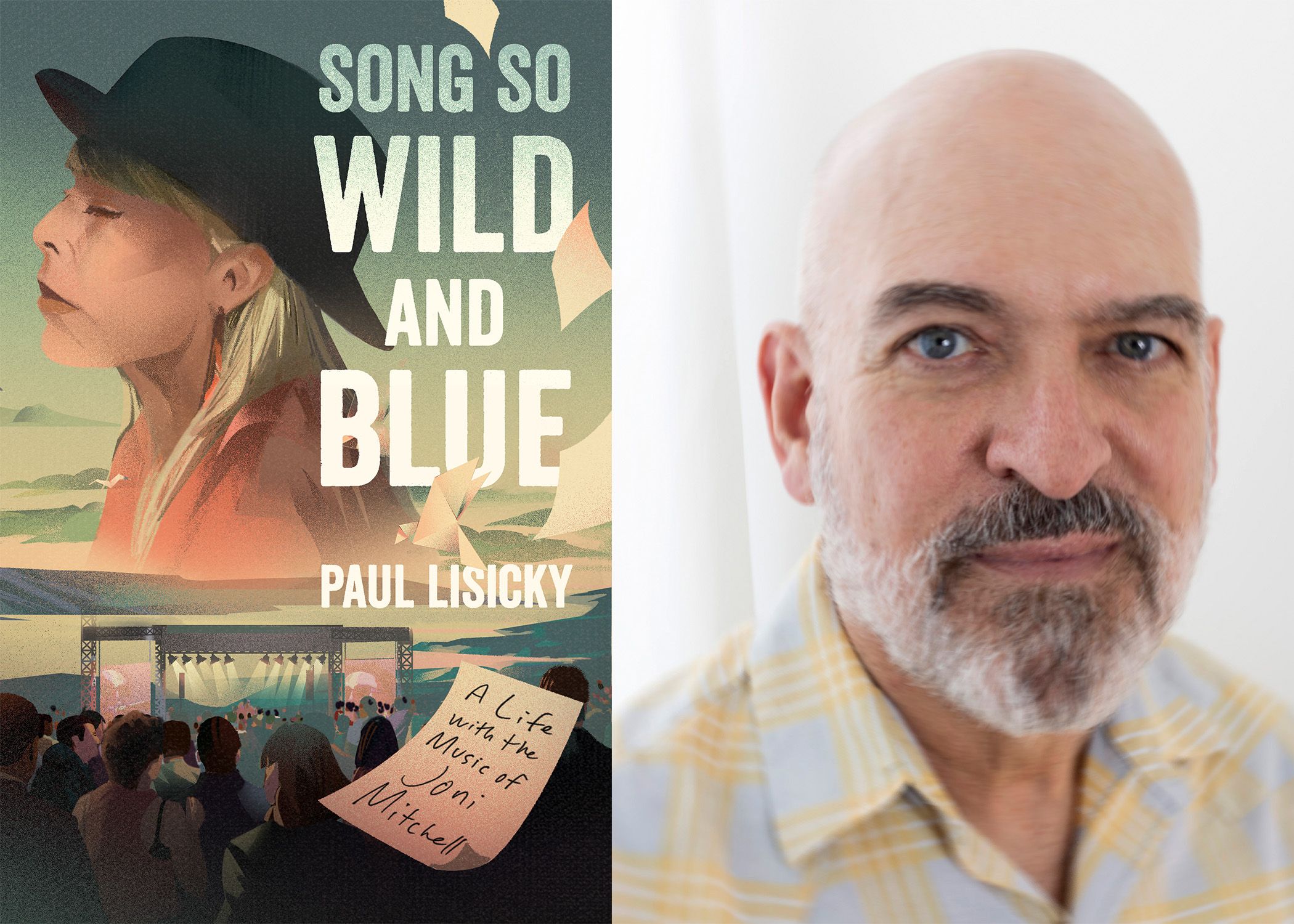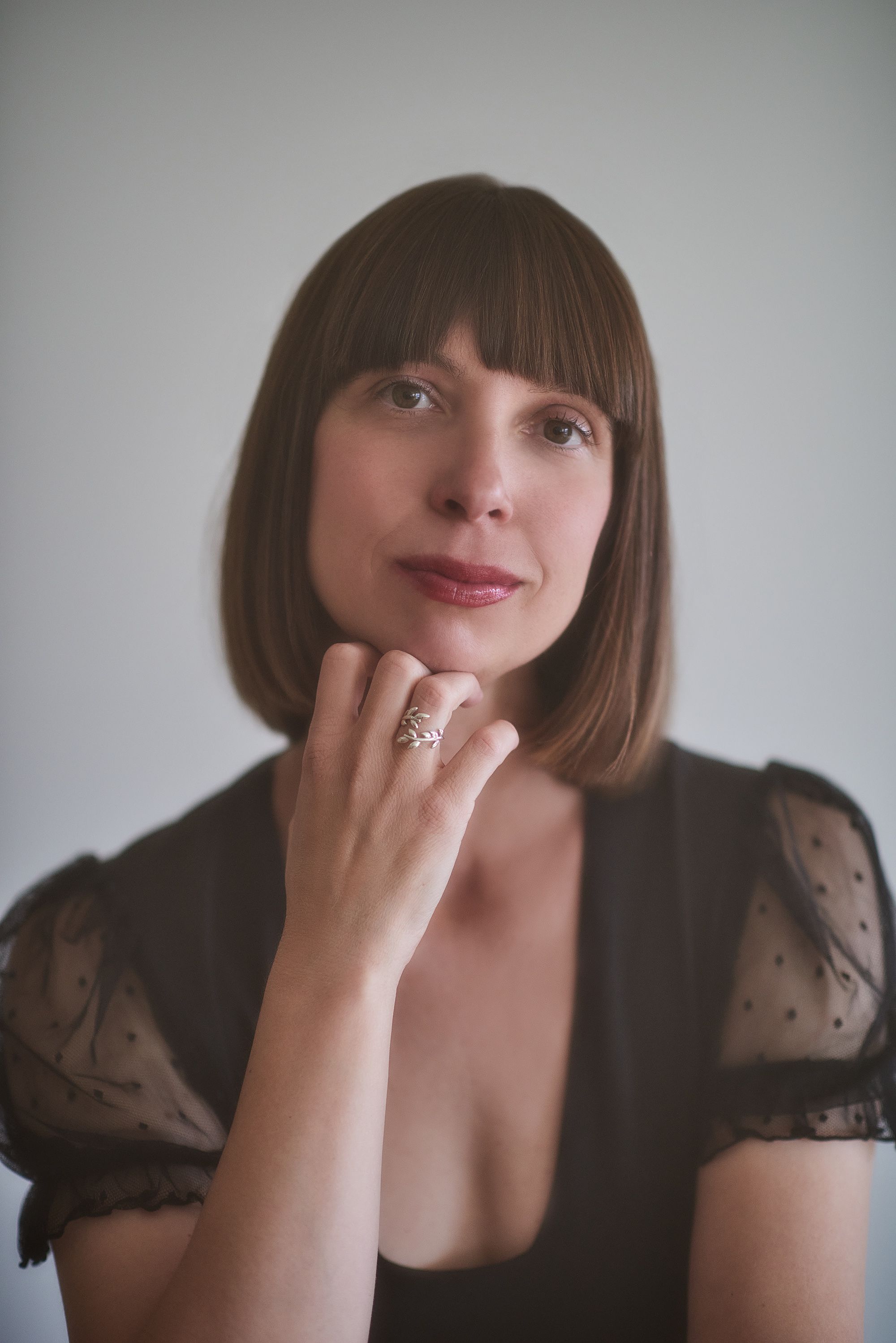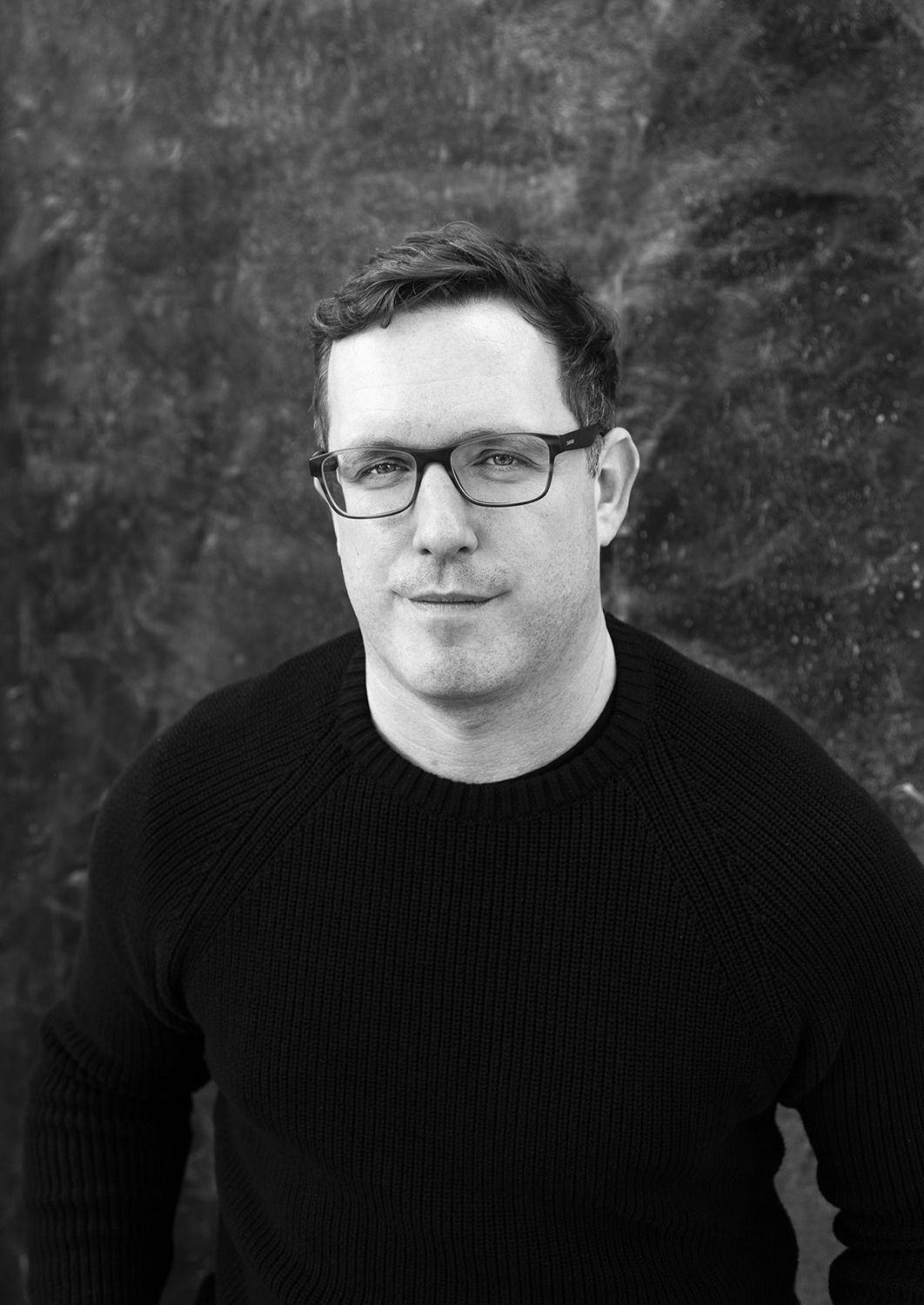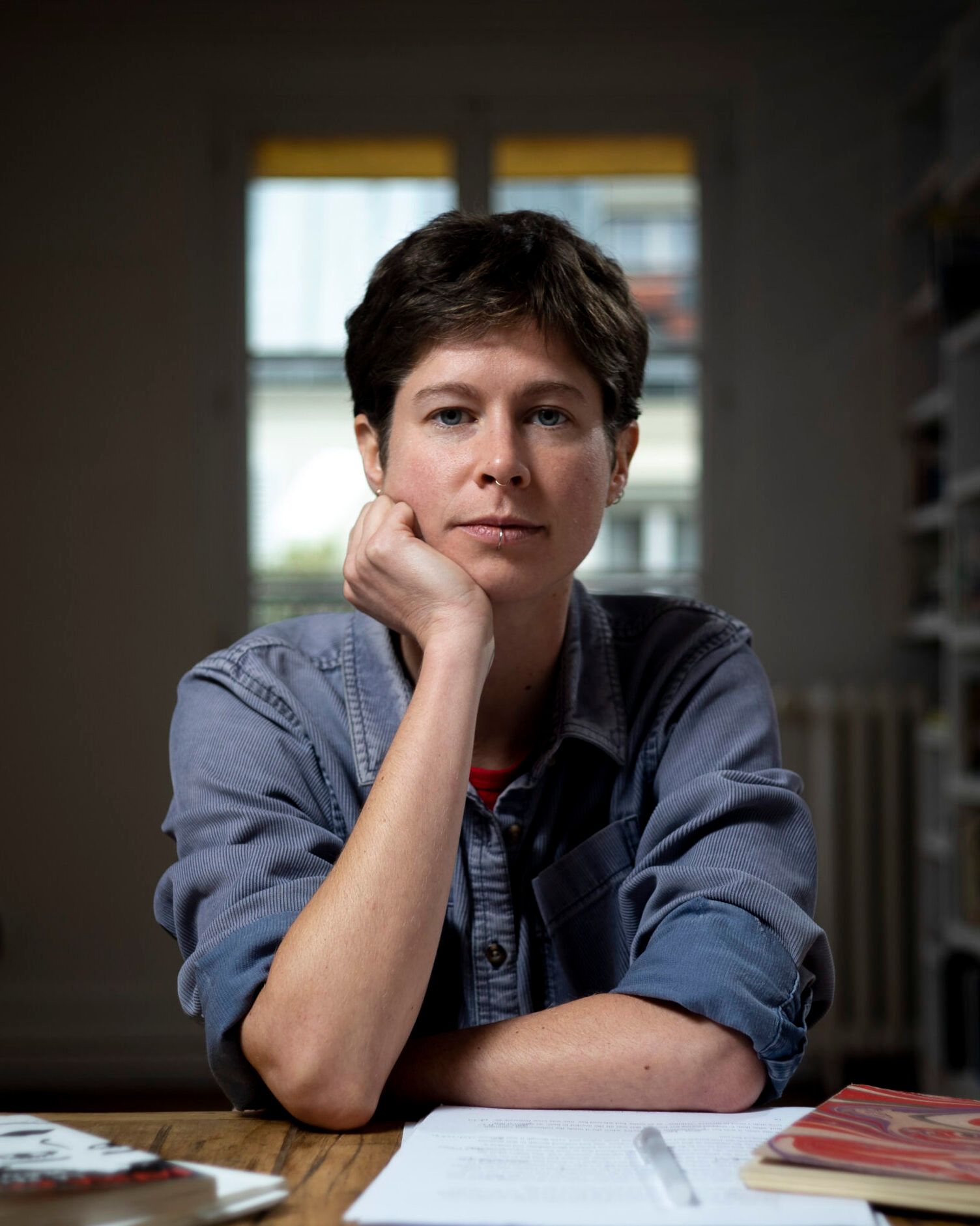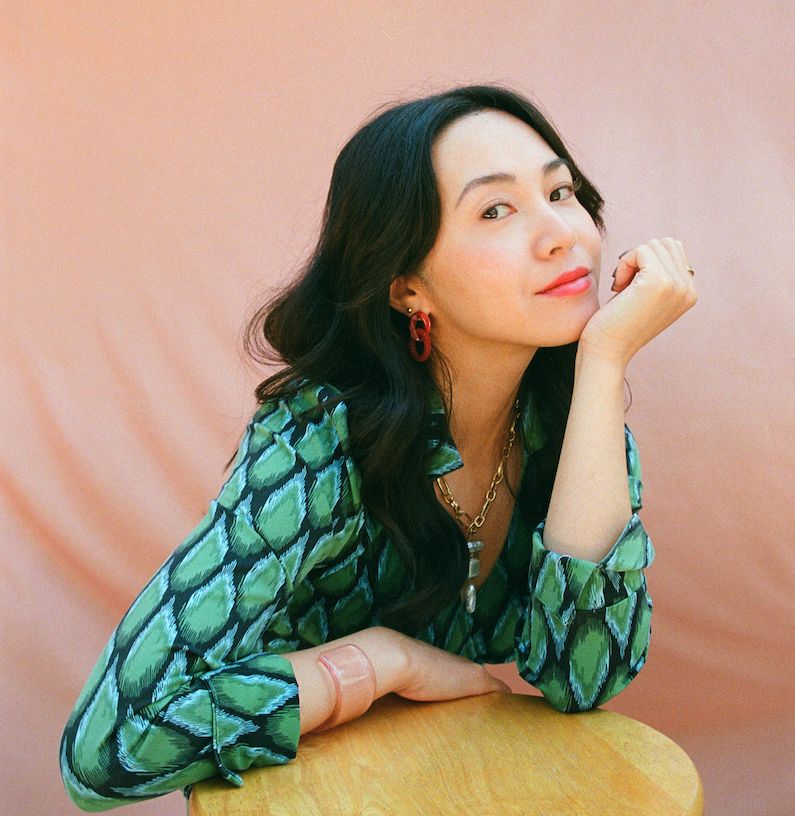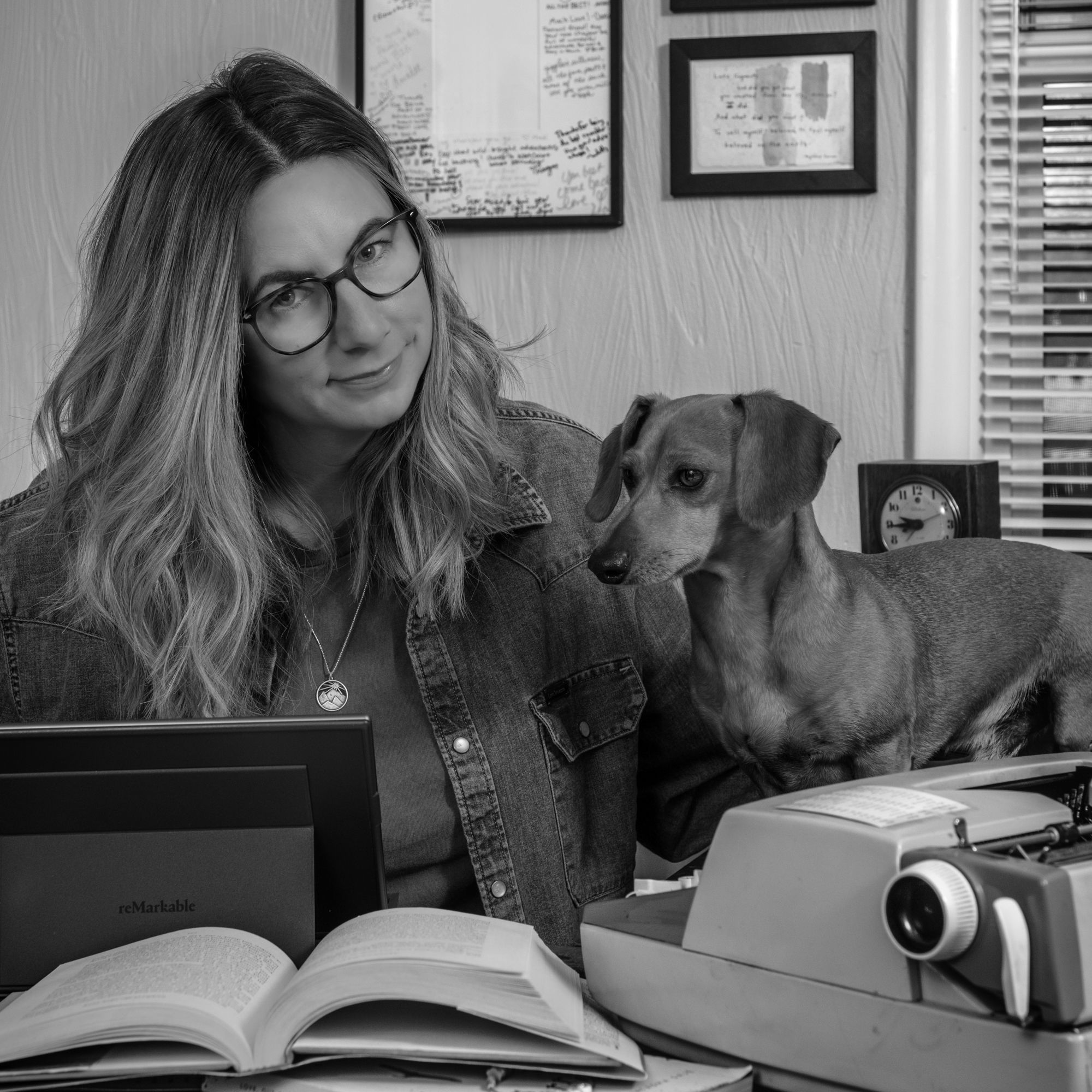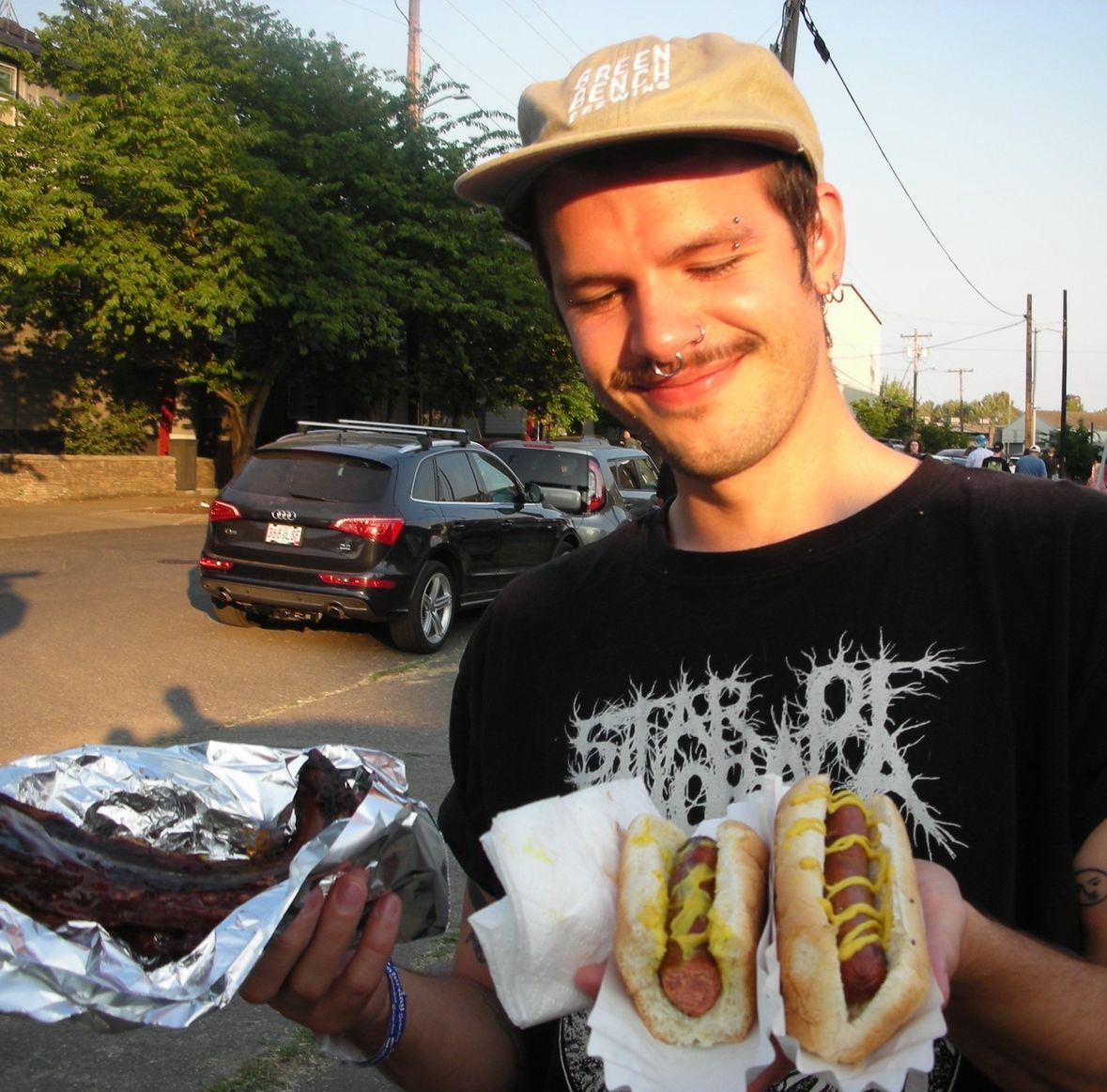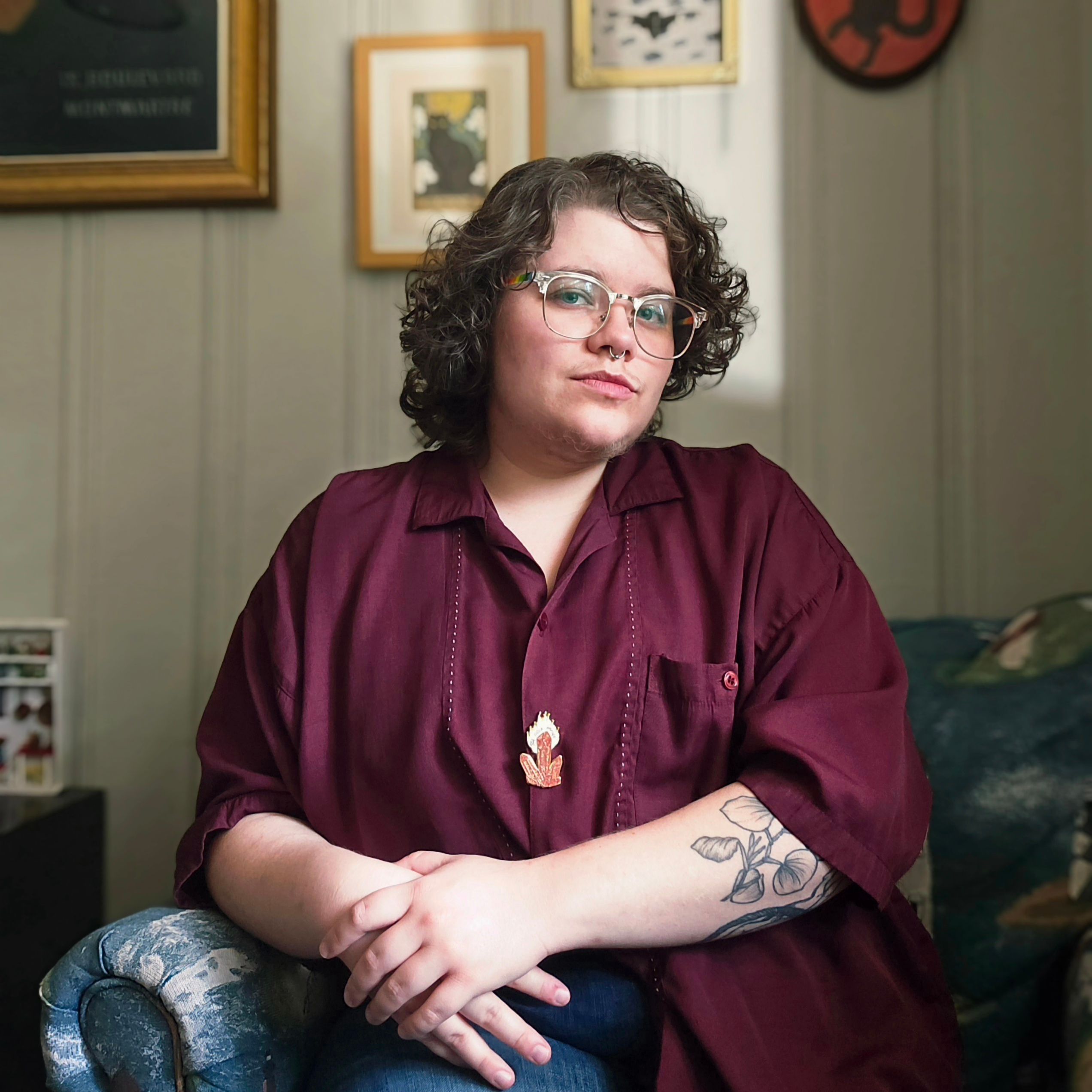Montserrat Andrée Carty: In this memoir, we learn about your previous life as a songwriter and the ways in which it prepared you to be a prose writer. I loved this line: “I’d come to think of my paragraphs as sweet ghosts of my songs.” You say every writer should begin with another art form. I so agree with this (maybe because I came to writing by way of music, too :))! Can you talk about how different art forms can feed each other?
Paul Lisicky: I love this question. The influence of visual art and film is all over Joni’s music, not only in the image-centered lyrics (“I spotted six jet planes / leaving six white vapor trails across the bleak terrain”) but in her vocal phrasing. The way she’ll fluctuate a held vowel to emphasize a lyric about light on water. Or, more specifically, the song “Dog Eat Dog,” in which the sequence “lie, cheat, skim, scam” is phrased as if she’s drawing hard lines in the air, without connection. That’s more than embroidery but part of its meaning.
In my case, I’m drawn first to harmony, or unexpected harmonic leaps in music. I’m always excited by music that changes key or time signatures. To me the closest realm to harmony in writing is description. What happens when we pit one description against an unexpected description? What kind of dissonance does that make? Does one description bleed into another, in an almost sonic way? I’ve always loved, for instance, the way Joni’s guitar chords often bleed into another.
By the time my third book came along, I became much more attuned to the sound of my sentences—their phrasing. Better yet, their melody. I wanted them to have a cadence that matched my own speaking patterns, my own cadence. That involved reading the work aloud, both while I was writing, and again and again afterward, to scan for those words that sounded out of sync with my mouth, lips, voice box. What matched? That was the more important question. So I tried to become more sensitive to becoming a singer with words alone—which might sound peculiar to some prose writers, but not a strange idea for those who write poetry.
MAC: You bring us into Joni’s experience vividly, with great detail. In one scene, when Joni is a child and goes to the hospital, we feel as if we’re right there with her. On a craft level, can you share some of the tools you used to blend the facts you found with the imagination necessary to bring those facts to life?
PL: Such a good question. There are the facts that have been recorded from Joni’s perspective—Joni’s mother coming into the room with a mask, her eyes haunted, a small Christmas tree in her hand. A boy in the room, also sick with the poliovirus. I needed to create a hospital room in my imagination to give those details some grounding. I don’t know how much of that actual room is on the page—I don’t describe the color of the walls or the height of the ceiling, but there is a window. It’s pretty general. But once I could put it into a physical space, it became an emotional space. I could feel the two bodies in it—it was more than just an idea. I could feel the constraints of that room, and Joni’s deepest wish to be anywhere but there. Maybe these tools always start with the imagination of an actual room or a setting. For instance, Joni’s hospital room is definitely in Saskatoon in my imagination and not, say, Lake Placid, though I’ve yet to visit Saskatoon. I feel the unending winter, the prairie beyond the outskirts of town, even though none of that ends up directly on the page.
MAC: You also draw parallels between your own life and Joni’s very naturally. You write her story, and later, describe a similar experience in your own life in a way that doesn’t feel forced. Any advice to the writer who wants to blend biography with autobiography?
PL: I think this correspondence in the book might just come from holding the pivots of someone’s autobiography—their mythology—in my imagination from the time I was in high school onward. It’s not like many of those pivot points have been a part of my own life. I’ve never given up a child for adoption, never lived in a cave in Crete, never had to teach myself to walk three times—where do I stop? But I do know what it was like to be a child whose childhood was haunted by illness, or the prospect of. I spent a lot of time home, by myself, out of school, making things to keep myself entertained and interested. It’s a challenge to translate this to more general advice. I suggested the comparison, giving the reader the chance to infer it through gestures and scene, and then I moved on. I couldn’t say directly— "my childhood was like Joni’s," because it wasn’t, and that kind of statement just felt—off. Boundaries are of a piece with ethics. If your imagination has been fed by someone, and you want to honor them, you don’t want to dominate or occupy their story.
“In Missing Out, psychotherapist Adam Phillips says our ‘unlived lives, our wished-for lives are as significant if not more so than our ‘so called lived lives.’”
“...maybe that life didn’t have to go unlived. Joni still thought of herself as a painter…By calling herself a painter, she could keep her music in the realm of play.”
Do you think we always have to choose one art form as the primary over the other or can they have equal weight? Say, if you are a musician who also paints, or a photographer who is also a dancer, and so on? Does one have to take a backseat towards a “hobby” or can they both be taken just as seriously? It might sound like a silly question, but it’s one that comes up for me a lot, and I find other multihyphenates struggle with it as well!
PL: We’re definitely living in a time when artists and celebrities are almost expected to be multihyphenates. To choose one art form over the other might sound dated, though one could say that most multi-hyphenates are known primarily for one art. If we know about Harry Styles’ acting, it’s likely because we know him first as a performing musician. Same goes for Rihanna.
I think the more difficult question is how to keep the “play” alive in our creative work, in whatever form it takes. How do we make work that’s impelled and strange, that isn’t overdetermined or constricted by all the imaginary projections of sales, likes, audience reaction? Or even brand? One of Joni’s great lessons is that she keeps reinventing her music to both stay alive as an artist but also to resist the music business’s efforts to pigeonhole her. So much of her work from the mid-70s onward sounds like it’s in active resistance to that folky, “sensitive” label.
Maybe tricking oneself into thinking that the work is a “hobby” is a way to escape those external pressures. I don’t think that work that comes out of a hobby-centric streak is necessarily opposed to seriousness—I think they can be of the same cloth. What can be made from not-knowing? Joni didn’t write “A Case of You” as an accomplished dulcimer player—she was learning how to play that instrument because she didn’t have her guitar with her. The searching quality of that song is of a piece with her reaching.
MAC: In your author’s note, you write about the thin line between the artist’s art and the artist as a person. You mention that you were not going to try and interview Joni for the book. I am endlessly fascinated by the topic of separation of art vs. artist. I sometimes wonder if once we know the artist as a person, or even just have an interaction with them, that it contaminates our feelings of the art in either direction. I’d love to hear a bit more of your thoughts on this!
PL: I can only use my own experience as a reference point here. Despite my artist’s note, I was just thinking that I don’t have a clear sense of who Joni is as person, which is probably all for the best. I’d rather protect the mystery of her. I’d rather there be a boundary. Sometimes the person who makes the songs comes alive for me through an unexpected detail—I was just thinking about a few anecdotes that Shawn Colvin offered up in the Road to Joni podcast, and I thought, ah, that’s who she is. But it isn’t quite the same persona of the songs, which is pretty much hammered into being, song by song. I think one of Joni’s gifts is to trick you into thinking she’s writing about herself when she’s really writing about you. She’s just using her nouns and markers to give you a suit to step into. Some kind of mysterious alchemy takes place, so that I feel like I’ve gone to Staten Island to buy a mandolin (See lyrics to “Song for Sharon”). It feels like it’s part of my emotional history.
In my words about that thin line dissolving between Joni and myself, I’m really talking about the Joni as she is known in and through her songs alone. I don’t think that’s actually the same person who might drink coffee in the morning with one of her cats splayed on her lap. That person is unknown to me.
MAC: You write powerfully on the ways grief changes us. This one line in particular, “I was never going to be the person I once was, shiny and sweet as a retriever,” struck me. I often think about these contrasting scenes in The Up Series documentary (have you seen it?). This little boy named Neil, so full of joy when we first meet him, then, seven years later, he is almost unrecognizable. His temperament has completely changed. He’s so serious, wears hurt all over his face. It is heartbreaking. It seems like for so many of us in life, there is this Before and After and once we’ve crossed that line, it’s hard to go back. Maybe I’m being melodramatic. And of course, now I am thinking of “Both Sides Now”’s lyrics. Can you talk about the ways, you’ve found, grief changes us?
PL: I haven’t seen The Up Series, but have read about it, and that little boy’s change says it all, doesn’t it? Grief isn’t conscripted to certain occasions, but part of the texture of everyday life. A favorite restaurant—a gathering place—closes down, an old friend lets us down, we can’t see the letters on the street sign we used to see, we look down at the back of our hands and see a spot beneath the ring finger. We lose someone we haven’t seen or talked to in thirty years, and don’t know how beloved that person was in our imagination until we catch ourselves in tears. It’s on ongoing reckoning, and Joni knew that even at 21, when she wrote “Both Sides Now.” It’s just part of being alive as breathing, and at some moments we’re probably better at processing it as others. I say all this knowing that some griefs are much harder than others, some come close to demolishing us, if not actually doing so. There’s a temptation to offer “wisdom,” but it wouldn’t be adequate to the strangeness of this thing we call life.
MAC: You write on reviews: “Whenever Joni had let the bad review inside, she’d wanted to stop playing…Whenever she’d refused to read anything about her, she missed out on the good words and couldn't quite believe it when someone said she’d changed their lives.” What is your relationship to reviews? I know some writers protect themselves by not reading them, but then, the flip side of that is that you miss the good stuff, too!
PL: I watched an interview recently in which Joni admitted to calling up the New York Times after they’d given her an awful review for the Travelogue album. She and the people in the audience had a laugh about it, but at the same time her bewilderment was still palpable. The bad reviews hurt, they mattered. She was doing pioneering work and for years it was dismissed, because the reviewers of the day didn’t have the tools to rewire their listening, or didn’t care enough to ask questions of their own standards. It demanded more of them than they were willing to give.
As for my own reviews? I scan them. I forget them, especially when they’re enthusiastic, because believing too much in that kind of thing can bring about its own kind of damage. The real challenge is to hone one’s rudder, to listen to one’s…inner tuning fork. So much is projected at each of us at all hours of the day, and art often starts when we simply say no. I begin here.
